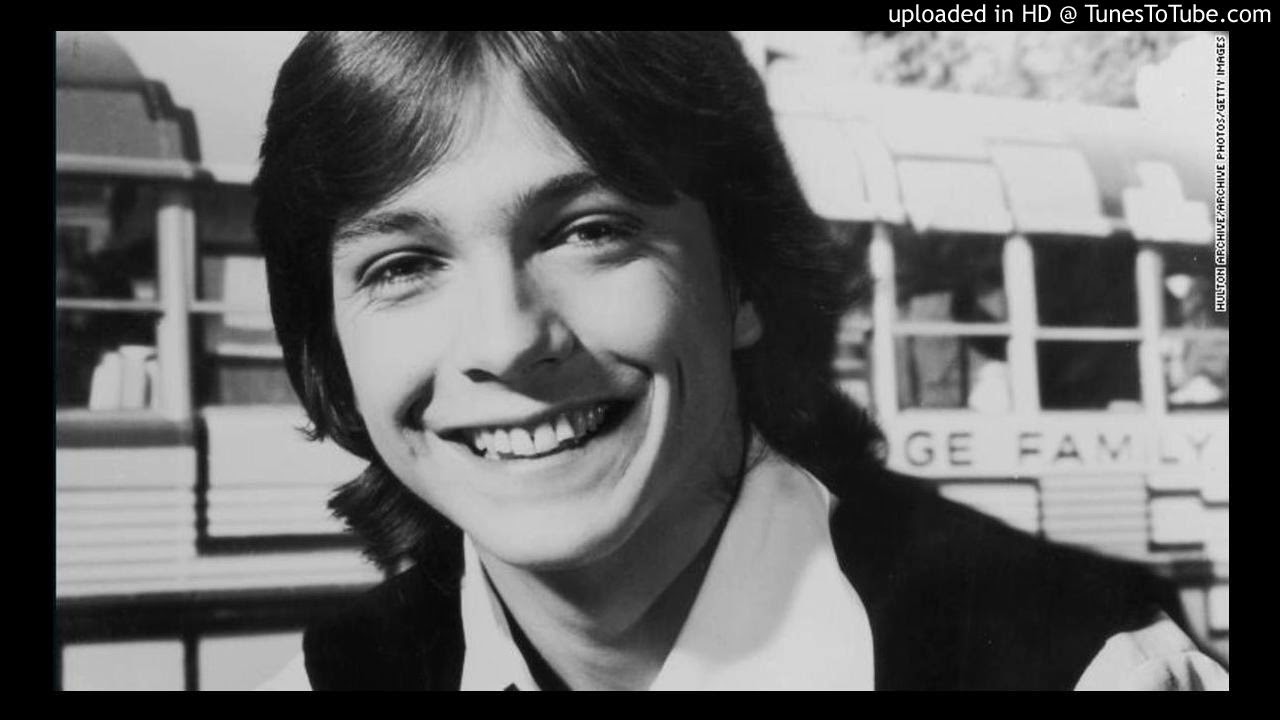
A resilient, late-autumn confession — a man talking himself brave while the heart insists on telling the truth.
Put the basics first, because they shape how memory settles: “Lyin’ to Myself” is the centerpiece single of David Cassidy’s self-titled 1990 comeback album David Cassidy (released on Enigma Records). Co-written by David Cassidy and Sue Shifrin, the track returned him to U.S. pop radio with rare authority: it reached No. 27 on the Billboard Hot 100 and No. 25 on Adult Contemporary, and it climbed to No. 17 on Canada’s RPM 100 Hit Tracks — his first U.S. Top-30 showing in eighteen years.
The single arrived in September 1990 (issued in the U.S. chiefly as a cassette single on Enigma, with a non-album B-side, “I’ll Believe You Again,” also written by Cassidy and Shifrin). On the album chart, David Cassidy itself reached No. 136 in the U.S., a modest placement that nonetheless marked a public re-entry after a long quiet. In the song’s promotional video, Cassidy waits in the echoing concourses of Grand Central Terminal, a visual that suits the lyric’s theme: a man stranded between what he says out loud and what the heart keeps whispering back.
What gives “Lyin’ to Myself” its staying power isn’t only the chart story; it’s the emotional geometry inside the lyric. Cassidy writes in the plain, unguarded grammar of denial: hearts don’t break, they just bend; it was only a sting; I’m fine. Line by line he stacks little alibis, then—almost against his will—lets the melody betray him. The verses pump themselves full of bravado, and the chorus lets the mask slip. Older listeners feel that reversal instantly, because they’ve lived it: the evenings when you say you’re fine and the house, very gently, says you’re not.
Musically the record is sleek but not showy—early-’90s pop-rock with a conscience. The groove moves in a mid-tempo stride that leaves space around Cassidy’s tenor; guitars sparkle rather than snarl; the rhythm section keeps the floor steady while the vocal carries the argument. It’s an arrangement designed for honesty: no elaborate production tricks to hide behind, only phrasing and breath. Cassidy’s voice—clear but slightly weathered—does the quiet work of adulthood here. He doesn’t plead; he confesses, and he does it with the soft dignity of someone who has already learned what pride costs.
There’s a story behind the song that deepens its tenderness. David Cassidy was his first U.S. album in fourteen years, released by a label (Enigma) that would fold not long after; the comeback therefore had the feel of a race against disappearing institutional support. Choosing to co-write the single with Sue Shifrin was as much artistic as personal: the lyric’s candor and melodic lift sound like two writers telling the same truth from opposite corners of a room. In that context, the track reads like a mission statement—less a bid for nostalgia than a claim that a famous voice could still say something unguarded and useful.
Listen with seasoned ears and you’ll notice the craft in the small turns. Cassidy leans into conversational rhythms—almost speaking a line before letting it bloom—so the chorus feels like thought sung against itself. The hook lands not with swagger but with recognition: I’m lyin’ to myself. For anyone who kept his early records in a stack by the console stereo, that candor may feel startlingly intimate. This isn’t the gleam of a teen-idol single; it’s the warm light of a late kitchen, when someone finally admits what the room already knows.
The single’s release details help complete the picture. In North America, “Lyin’ to Myself” was pushed in tape-forward fashion (fitting for 1990) with that non-album B-side, a small collector’s wrinkle that fans still remember. Overseas, 7-inch and CD versions circulated, but in the U.S. the cassette and promo configurations carried the water. The album’s chart peak was modest, but the song itself did the lasting work—reviving radio faith in a singer many associated only with earlier decades, and proving that the voice could carry weight without the scaffolding of nostalgia.
Meaning, ultimately, is why the record endures. “Lyin’ to Myself” is a portrait of the mind bargaining with the heart: the narrator tries on bravado as a disguise, only to discover it’s a mirror. That’s why older listeners often hear the track as a companion more than a hit: it names the private ritual of telling yourself a story until the truth taps you on the shoulder. Cassidy doesn’t punish that impulse; he forgives it. The forgiveness is in the melody’s lift, the way the chorus lets air into the room. In three radio-friendly minutes, the song turns denial into tenderness—a late-autumn pop song that understands how people actually heal.
If you return to it now, you may find that its finest quality is its steadiness. No grand theatrics, no grievance: just a sturdy tune, a clear voice, and a handful of lines that feel like they’ve been waiting for you to grow into them. That is how David Cassidy earned his way back onto the dial in 1990—and why “Lyin’ to Myself” still sounds, today, like someone finally telling the truth.